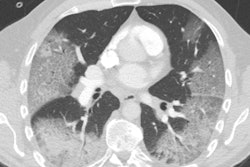Dear AuntMinnieEurope Member,
When Dr. Christiane Kuhl says COVID-19 poses a major threat, then you know things are extremely serious. Being a top researcher, she's not prone to exaggeration. I've reported on her work for more than 20 years and have never known her to make a rash, sensational statement.
Kuhl's hospital in Aachen, Germany, is looking to double the number of intensive care beds and ventilators within the next two weeks or so, and many people are being trained to do the work of intensive care nurses. In an exclusive interview, she talks about the crisis and also reflects on how to avoid burnout during these trying times. Go to the Women's Imaging Community.
Over the months ahead, artificial intelligence (AI) might well be vital in relieving the burden on clinicians by rapidly reading CT scans of suspected COVID-19 patients, according to informatics expert Dr. Erik Ranschaert. Along with colleagues from the Netherlands Cancer Institute, he's making progress in training an algorithm to detect abnormalities on chest CT and quantify lung involvement. Visit the Artificial Intelligence Community.
Point-of-care ultrasound (POCUS) may also have a role in combating the novel coronavirus and COVID-19. Because it can be used at the bedside, POCUS avoids concerns about spreading the virus when patients are moved to different locations. Don't miss our news report in the Ultrasound Community.
Meanwhile, important research findings on MRI of the fetal brain have appeared in the European Journal of Radiology. A group from Israel studied 1.5-tesla MRI scans from 255 women whose fetuses' brains were imaged from the 24th to 36th week of gestation. The results deserve a close look.
German and Swiss investigators have devised a PET-based risk classification metric for prostate cancer patients to help predict their survival without disease recurrence. Go to the Molecular Imaging Community.
Molecular radiotherapy -- or radioligand therapy -- continues to generate interest. A European team of nuclear medicine specialists has proposed a 10-point plan to overcome the barriers to clinical implementation in this emerging area.




















